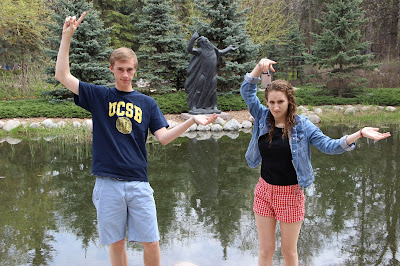Next, we traveled to the Assiniboine Park area, where we
explored the 1,110 acres that the park has to offer. First, we ventured over to
the English Gardens, which mirrors the English landscape style because
Manitoba’s strong ties to England and the queen. Then we checked out the Leo
Mol Sculpture Garden, designed by the Ukrainian Canadian artist and sculptor,
Leonid Molodoshanin. After that, we explore the Pavilion Gallery Museum, which
includes the largest collection of artwork by Manitoba’s artists Ivan Eyre,
Clarence Tillenius, and Walter J. Phillips. In addition, the museum has a
Winnie the Pooh gallery because this iconic bear is named after Winnipeg.
Later, we went to the Assiniboine Park Conservatory, which is an indoor garden
with thousands of flowers, plants, and trees. Lastly, we walked through the
Citizens Hall of Fame, where we learned about the history of many famous Winnipeg
citizens. Among them includes Terry Fox, a Cancer Research Advocate, who ran
across Canada to raise awareness and funds for cancer research. Assiniboine
Park had a lot to offer.

 |
| Entrance to the English Gardens |
 |
| English Gardens |
 |
| Leo Mol Sculpture Garden |
 |
| Art Gallery |
 |
| Original Winnie the Pooh sketches |
 |
| Conservatory |
 |
| Citizens Hall of Fame |



























